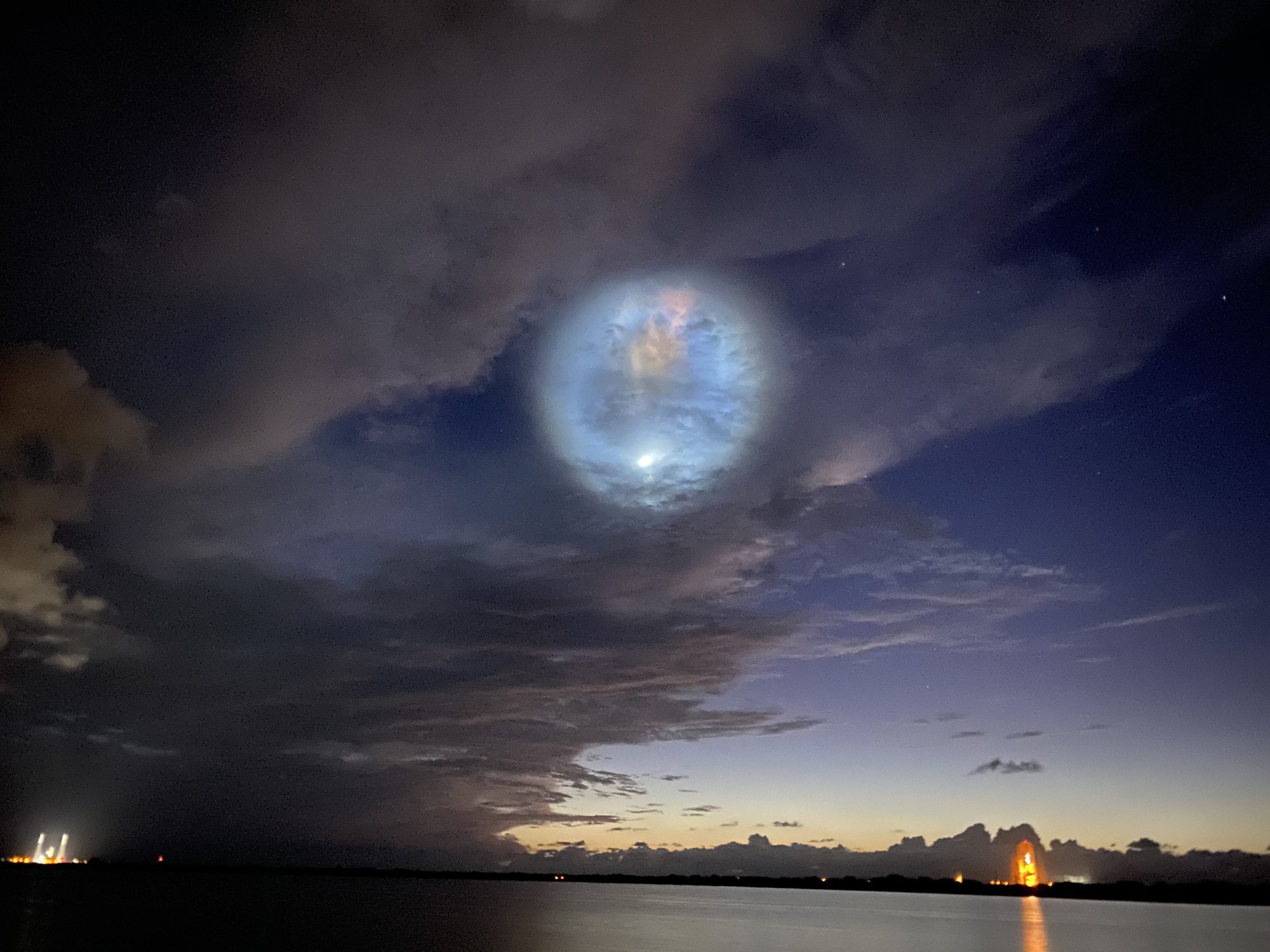SpaceX's predawn Starlink satellite launch looks simply stunning in these Twitter photos
Liftoff occurred just over an hour before sunrise in Florida on June 13.
When SpaceX launched a Falcon 9 rocket into space Saturday (June 13), it delivered 58 Starlink satellites and three Planet SkySats into orbit. The mission was a success. It also looked amazing.
That's because SpaceX launched the Falcon 9 rocket at 5:21 a.m. EDT (0921 GMT), just over an hour before sunrise, from Space Launch Complex 40 of the Cape Canaveral Air Force Station in Florida. As the rocket climbed into the predawn sky, its exhaust plume was illuminated by sunlight, creating a dazzling view.
Some observers even reported seeing the Falcon 9 rocket's reentry maneuver as it touched down on SpaceX's drone ship Of Course I Still Love You about 350 miles (600 kilometers) away in the Atlantic Ocean. You can see some of those amazing launch views from the photographers and spectators who shared the sight on Twitter below.
Related: SpaceX's Starlink satellite megaconstellation launches in photos
Space.com contributor Amy Thompson captured this view of the launch from a viewing site near the Cape Canaveral Air Force Station just after the Falcon 9's liftoff. She described the sight as as a "nebula hanging in the sky" after the Falcon 9 headed to orbit.
Noctilucent cloud from @SpaceX launch this morning seen across Florida at Ft Myers. @SPACEdotcom @tariqjmalik #spacex #nasa #florida pic.twitter.com/PDHcVc6VWLJune 13, 2020
WOAH! A #SpaceX #Starlink launch into astronomical twilight is the absolute BEST WAY to start your day. I'm fairly certain all of my neighbors were wondering why there was a crazy lady outside screaming at 5am.Uhhh #LookUpSpaceX #Falcon9 & 2nd stage MVAC from 140mi downrange! pic.twitter.com/P1ryWiVjZDJune 13, 2020
What a sight to see this morning! So glad I was awake for this! #SpaceX pic.twitter.com/D8a8xItGCVJune 13, 2020
F9/Starlink: A streak shot and an interesting iPhone shot of this morning's launch pic.twitter.com/xbhvDPzKzeJune 13, 2020
Lifting off 63 minutes before sunrise and putting on another beautiful show as it hits sunlight downrange, a Falcon 9 takes another 58 Starlink and three Planet earth-imaging satellites into orbit from Cape Canaveral early Saturday morning. pic.twitter.com/YvBDCrLqaHJune 13, 2020
#SpaceX falcon9 launch more #starlink satellites this morning at 5:21AM. Beautiful launch. pic.twitter.com/TPXNpfd5xTJune 13, 2020
Gorgeous Fisheye Streak shot to orbit short while ago of #SpaceX #Falcon9 launch of 9th batch #Starlink internet comsats (58) and 3 @planetlabs #Skysats 521 AM ET Jun 13 - arcing over to horizon while darting in and out of clouds pic.twitter.com/fWTWGmcKI7June 13, 2020
And the entry burn of Falcon 9 B1059.3 was seen from the Cape! Check out @ChrisG_NSF view on the NSF livestream:https://t.co/Cy14NLgudX pic.twitter.com/3crlPY0XxGJune 13, 2020
A luminous sight over Cape Canaveral as #SpaceX successfully launches 58 Starlink satellites and three of @planetlabs's SkySats to orbit on a reusable Falcon 9 rocket📷: @johnkrausphotos for Supercluster pic.twitter.com/jLpssRhXcHJune 13, 2020
SpaceX successfully landed its Falcon 9 rocket booster after the successful Starlink launch. You can see that video below as provided by SpaceX.
And now, back to the amazing spectator photos!
Breaking space news, the latest updates on rocket launches, skywatching events and more!
Beautiful @SpaceX dawn. #Starlink pic.twitter.com/d7a3x75XwHJune 13, 2020
These photos were taken from my phone. The first 2 pictures show the second stage burn and the first stage reentry burn. #spacex #starlink @SpaceX pic.twitter.com/MUOwV8ZWZMJune 13, 2020
Oh my goodness, check out Julia Bergeron's (@julia_bergeron) Falcon 9 B1059.3/Starlink launch photo for NSF! 😲 pic.twitter.com/iEN5SfIK6RJune 13, 2020
#SpaceX Early morning launch with cloudy skies, spectacular. pic.twitter.com/jGva8mgdh9June 13, 2020
SpaceX's Falcon 9 launch on Saturday was the ninth mission to launch dozens of Starlink internet satellites at one time as the company builds a megaconstellation in orbit. The satellites are designed to provide high-speed internet access anywhere on Earth, particularly in remote and under served locations.
The Falcon 9 launch was the second of three commercial launches on Saturday.
About four hours earlier, a Rocket Lab Electron booster launched five small satellites into orbit from a pad on the Mahia Peninsula in New Zealand. Then, nearly 11 hours later, the Japanese start-up Interstellar Technologies attempted to launch its Momo-F5 sounding rocket from Taiki Town, Hokkaido, but that mission failed to reach suborbital space.
Email Tariq Malik at tmalik@space.com or follow him @tariqjmalik. Follow us @Spacedotcom, Facebook and Instagram.
OFFER: Save 45% on 'All About Space' 'How it Works' and 'All About History'!
For a limited time, you can take out a digital subscription to any of our best-selling science magazines for just $2.38 per month, or 45% off the standard price for the first three months.

Tariq is the award-winning Editor-in-Chief of Space.com and joined the team in 2001. He covers human spaceflight, as well as skywatching and entertainment. He became Space.com's Editor-in-Chief in 2019. Before joining Space.com, Tariq was a staff reporter for The Los Angeles Times covering education and city beats in La Habra, Fullerton and Huntington Beach. He's a recipient of the 2022 Harry Kolcum Award for excellence in space reporting and the 2025 Space Pioneer Award from the National Space Society. He is an Eagle Scout and Space Camp alum with journalism degrees from the USC and NYU. You can find Tariq at Space.com and as the co-host to the This Week In Space podcast on the TWiT network. To see his latest project, you can follow Tariq on Twitter @tariqjmalik.


